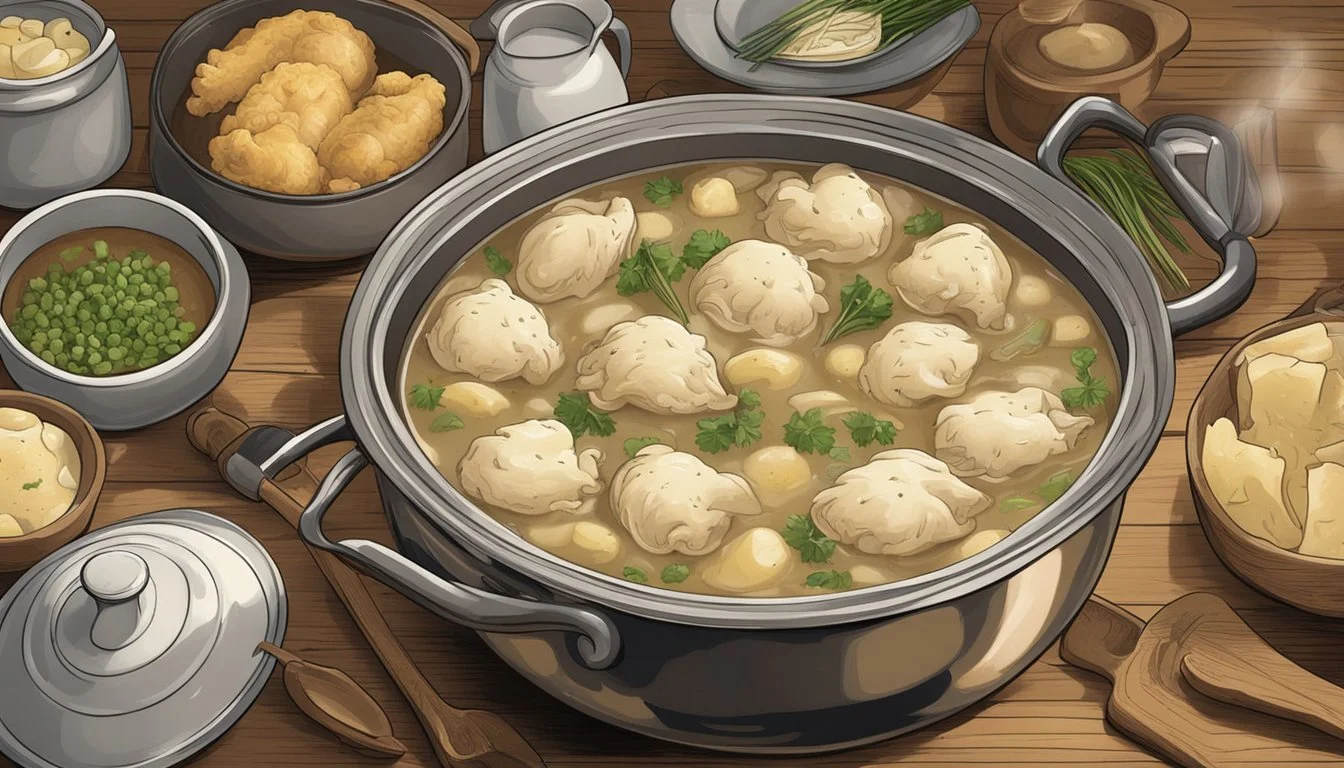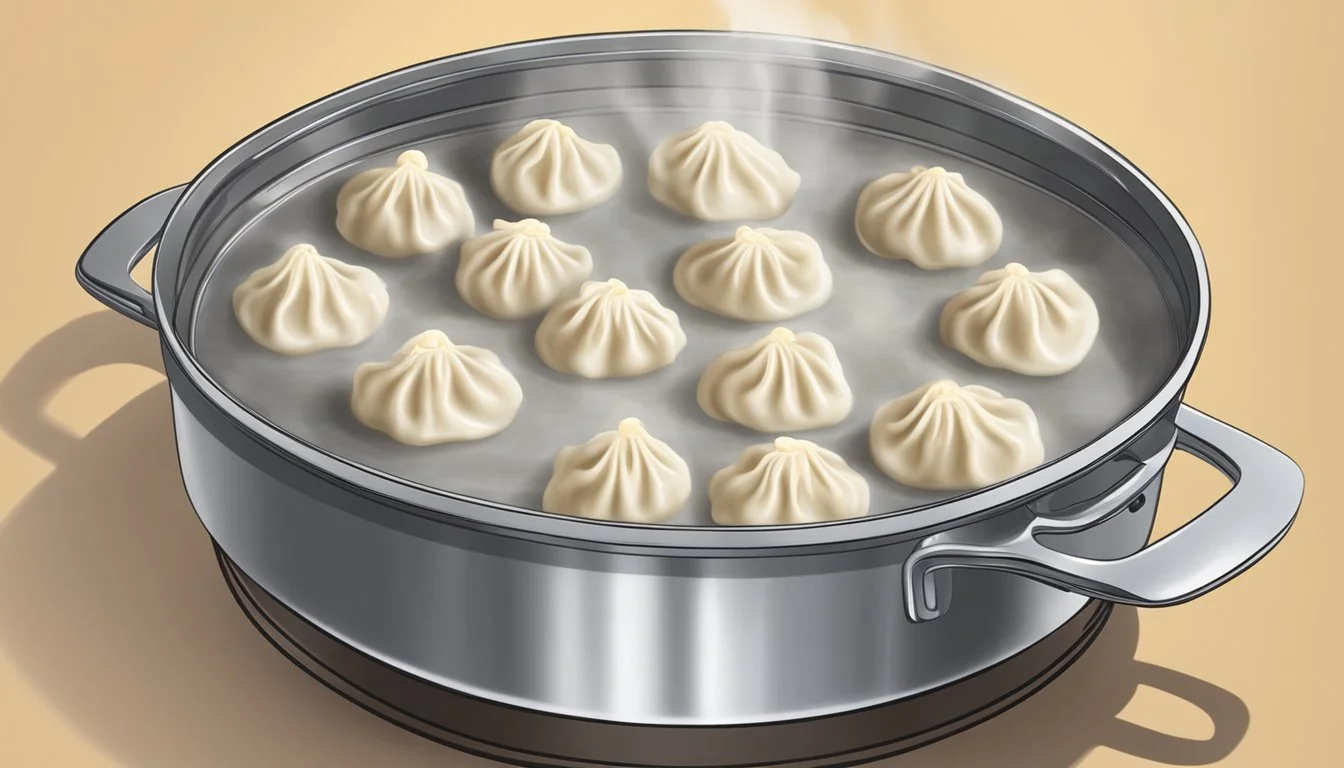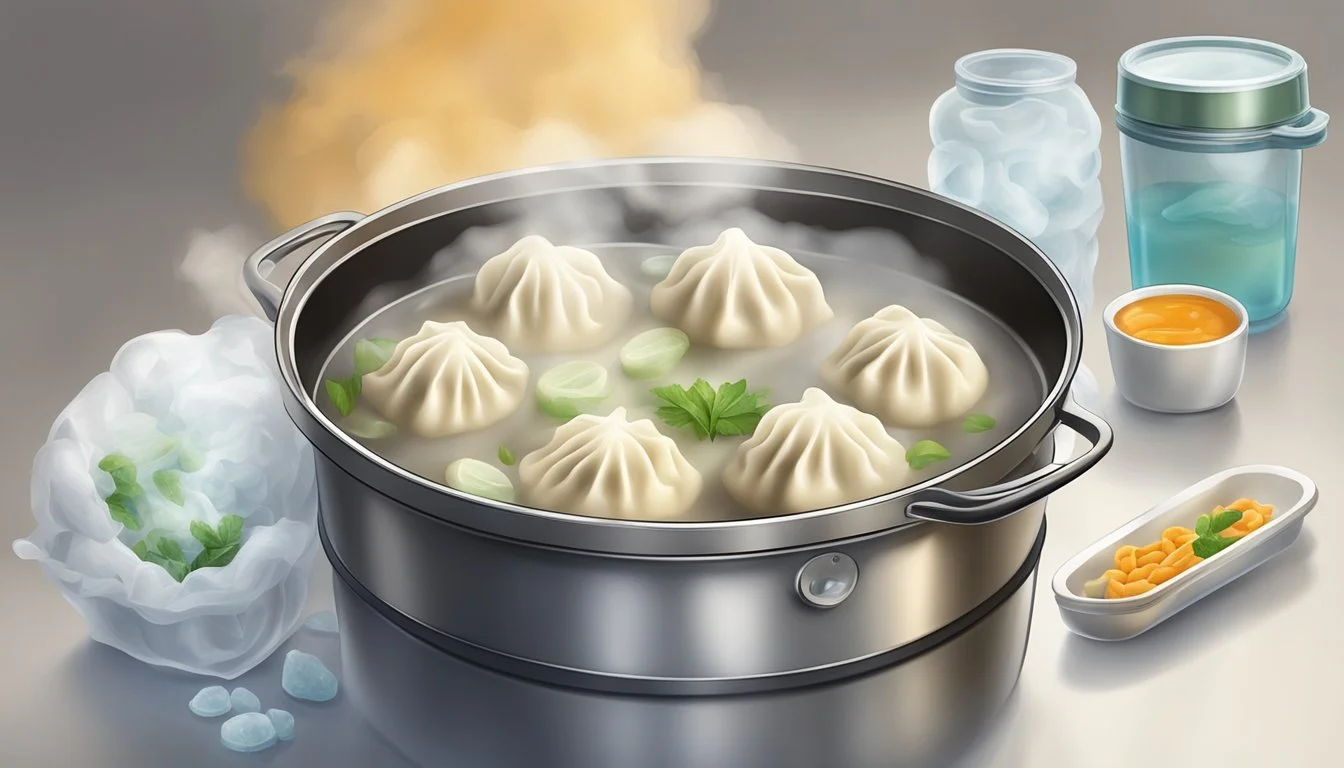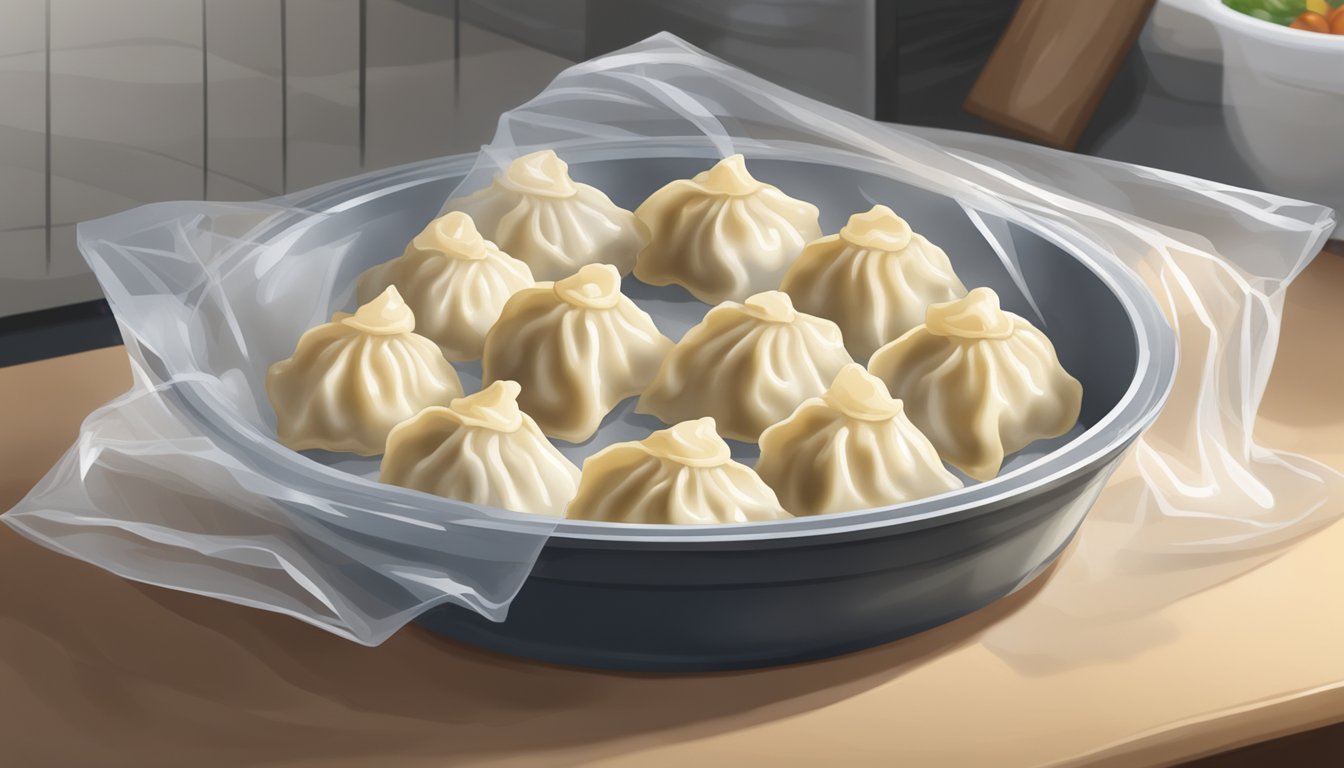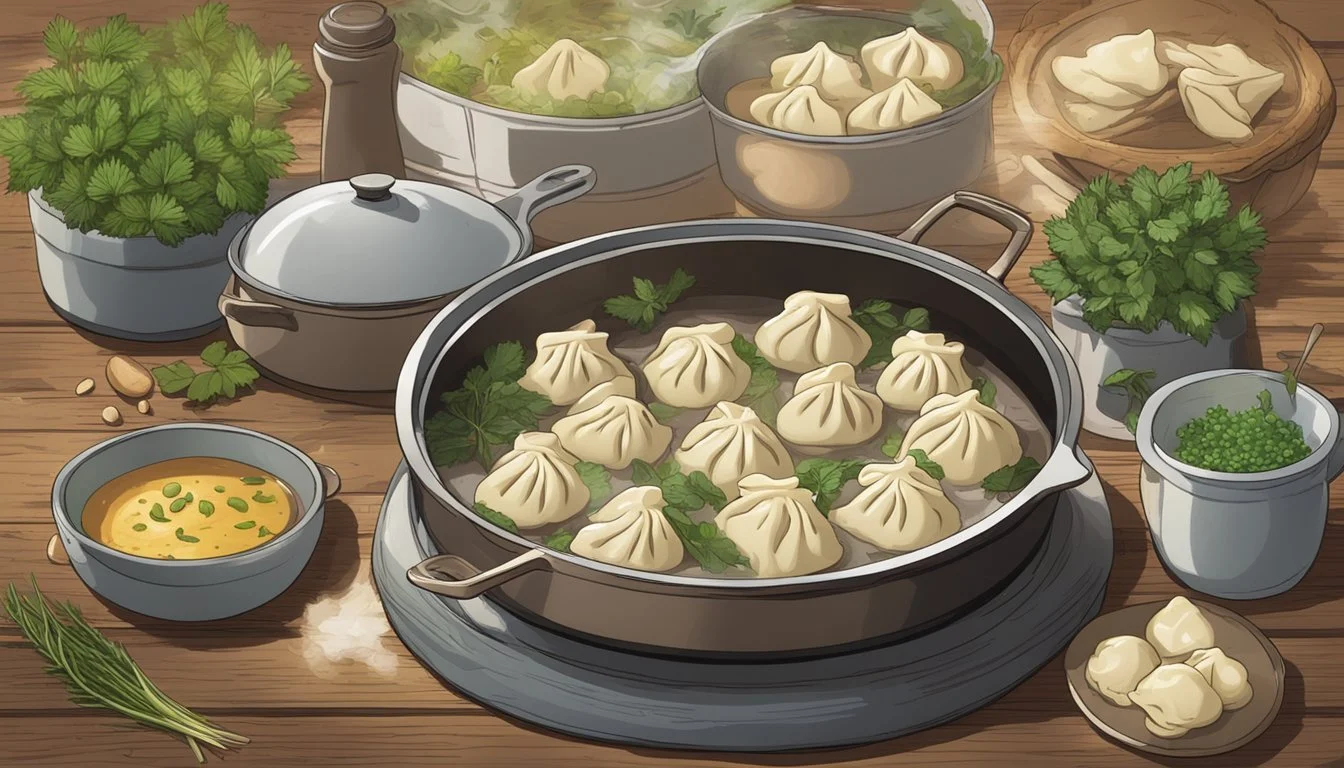How Long Do Chicken Dumplings Last?
Storage Tips and Shelf Life
Chicken and dumplings, a beloved comfort food, can provide a satisfying meal that warms the soul. Cooked chicken and dumplings will last 3-4 days in the refrigerator. This ensures you can enjoy this nutritious dish without compromising on safety and quality.
When stored properly, chicken and dumplings can also be frozen for 2-3 months, though the texture of the dumplings may change. Using a freezer-safe container or freezer bags helps maintain the dish’s integrity over time.
This classic dish, often made with tender chicken and fluffy dumplings immersed in a savory broth, provides a hearty serving of nutrition. Whether enjoying leftovers or planning meals ahead, knowing how long chicken and dumplings last is essential for any home cook.
Understanding Chicken and Dumplings
Chicken and dumplings is a comforting dish enjoyed in many regions. It consists of chicken stewed with dumplings submerged in a savory broth. The variations in ingredients and preparation methods highlight its rich culinary significance.
Ingredients and Variations
The core ingredients for chicken and dumplings include chicken, dumplings, vegetables, and broth. Common vegetables are carrots, celery, and onions. The broth is often made from scratch using chicken bones and aromatics.
Dumplings vary significantly. Some recipes call for noodle-like dumplings, while others use fluffy biscuit-like dough. Homemade dumplings may have a superior texture, though store-bought versions offer convenience.
Regional variations also exist. Southern recipes often feature a rich, creamy broth, whereas Northeastern versions may have a more clear, broth-based consistency.
Culinary Significance and Regional Varieties
Chicken and dumplings hold cultural significance, particularly in American Southern and Midwestern cuisine. Historically, it has been a way to stretch ingredients, making it both economical and nourishing.
In the South, it's often served at family gatherings and holidays. In the Midwest, it appears frequently during colder months, providing warmth.
Different regions add unique touches, like using cornmeal in the dumplings or incorporating local vegetables. These regional twists make chicken and dumplings a versatile dish, adaptable to local tastes and available ingredients.
Nutritional Considerations
Chicken and dumplings offer a balanced meal, with protein from the chicken and carbohydrates from the dumplings. Vegetables like carrots, celery, and onions provide essential vitamins and fiber.
A homemade recipe allows for better control over nutritional content, such as reducing sodium or increasing vegetable quantities. Store-bought alternatives might contain preservatives and higher sodium levels, which may be less desirable for some.
Those monitoring their diet can modify the recipe by using whole wheat flour for dumplings or opting for a low-sodium broth. Overall, chicken and dumplings can be a relatively nutritious comfort food when prepared mindfully.
Storage Fundamentals
Proper storage is essential for extending the shelf life of chicken and dumplings and preventing foodborne illnesses. By focusing on storage conditions, container selection, and wrapping techniques, you can ensure your meal remains safe and delicious.
Importance of Proper Storage
Storing chicken and dumplings correctly can significantly reduce the risk of bacterial contamination. Bacteria can multiply rapidly at temperatures between 40°F (4°C) and 140°F (60°C). Leaving them at room temperature for more than two hours can increase the risk of foodborne illnesses.
To prevent this, refrigerate leftovers promptly. Reducing exposure to air and moisture is critical. This helps preserve the texture and flavor of the dish. Proper storage methods can add several days to the shelf life, making a significant difference in meal planning and food safety.
Optimal Storage Conditions
Chicken and dumplings should be stored in the refrigerator at or below 40°F (4°C). This temperature slows bacterial growth. In the fridge, the dish can last for 3-4 days. For longer storage, freezing is an option. Frozen chicken and dumplings can last up to 2-3 months.
Before freezing, ensure they have cooled completely. Rapid cooling can be achieved by spreading the food out in shallow containers. This method helps maintain the quality of both the chicken and the dumplings. Always label and date containers to keep track of storage times.
Containers and Wrapping Techniques
Using the right containers is crucial. Airtight containers are the best option. They prevent moisture loss and limit air exposure, both of which are important for maintaining quality. Freezer-safe bags are also effective for freezing. Squeeze out as much air as possible before sealing.
Aluminum foil and plastic wrap can be used for short-term storage in the refrigerator. Cover the dish tightly to avoid drying out. When reheating, transfer the contents to an oven-safe dish and cover with foil to retain moisture. Always ensure food is heated through to avoid health risks.
By following these methods, you ensure your chicken and dumplings are stored safely and remain tasty.
Safe Refrigeration Practices
Proper refrigeration is crucial to ensure chicken and dumplings remain safe and retain their quality. The main factors to consider include duration of storage and the differences between homemade and store-bought variants.
Refrigerator Storage Duration
Cooked chicken and dumplings should be stored in the refrigerator at or below 40°F. The optimal storage duration for chicken and dumplings in the fridge is 3 to 4 days.
Beyond this timeframe, the risk of bacterial growth increases, elevating the chance of foodborne illness. It's important to keep leftovers in airtight containers to prevent moisture loss and cross-contamination. Label containers with the date of preparation to monitor freshness accurately.
Refrigerating Homemade vs. Store-Bought
Homemade chicken and dumplings may contain fewer preservatives compared to store-bought versions. This generally means they might spoil faster.
Regardless of the source, both require refrigeration as soon as possible after cooking or purchasing. Store-bought chicken and dumplings can last up to the same 3-4 day timeframe in the fridge if stored properly. It's recommended to check any labels or guidance provided on store packaging for specific storage recommendations.
To ensure safety, always adhere to the “danger zone” principle: food should not be left out at room temperature for more than 2 hours. This helps to mitigate the risk of bacterial growth that thrives between 40°F and 140°F. Use these practices to maintain safety and quality effectively.
Freezing Techniques
Properly freezing chicken and dumplings ensures their quality is maintained and extends their shelf life. Key considerations include preparation, preventing freezer burn, and correct labeling and organization.
How to Freeze Chicken and Dumplings
To begin, blanch the dumplings by immersing them in boiling water for 1 minute, then quickly transferring them to ice water. This step helps preserve texture during freezing.
Next, arrange the dumplings on a baking sheet, ensuring they do not touch. Place the baking sheet in the freezer for about 30 minutes until the dumplings are solid.
Once frozen, transfer the dumplings to a freezer bag or airtight container. Be sure to remove as much air as possible before sealing to maintain freshness.
Preventing Freezer Burn
Freezer burn occurs when air reaches the food, causing dehydration and loss of flavor. To avoid this, use high-quality freezer bags designed specifically for long-term storage, as they are thicker and more resistant to punctures.
Ensure all food items are completely cooled before freezing to minimize condensation within the bags. Removing air before sealing freezer bags or using a vacuum sealer is crucial to prevent freezer burn.
Labeling and Organization
Proper labeling is vital for tracking storage times and contents. Use a permanent marker to label each bag or container with the contents and the date of freezing.
Organize the freezer by placing newer items behind older ones to ensure older items are used first. Group similar foods together and use clear containers or bags to easily identify items.
Incorporating these techniques ensures chicken and dumplings remain delicious and safe for up to 2-3 months in the freezer.
Thawing and Reheating
Properly thawing and reheating chicken and dumplings ensures that they remain safe to eat and retain their flavor and texture. These steps should be followed carefully to avoid any risk of contamination or negative changes in quality.
Safe Thawing Methods
Chicken and dumplings should ideally be thawed in the refrigerator. This process may take several hours or even overnight, but it is the safest method as it keeps the food at a safe temperature.
Another effective method is using cold water. Place the container or bag of chicken and dumplings in cold water, changing the water every 30 minutes until fully thawed. This method is faster than refrigerator thawing but must be monitored to ensure the water stays cold.
Avoid thawing chicken and dumplings at room temperature as it can lead to bacterial growth. If in a hurry, the microwave can be used to thaw the dish. Use the defrost setting and periodically check the food to prevent it from starting to cook.
Reheating for Best Quality
Reheating chicken and dumplings can be done using various methods to suit different preferences. On the stovetop, place the thawed dish in a pot or Dutch oven and heat on low. Stir occasionally to ensure even heating, letting it simmer for about 10-15 minutes.
In the microwave, place the portion in a microwave-safe container and cover. Heat on medium power for 2-3 minutes, then stir and continue heating in 1-minute increments until hot.
For an air fryer, preheat it to 350°F. Arrange the dumplings in a single layer in the basket and cook for 3 minutes. Flip them and heat for another 3 minutes for a crispier texture.
Regardless of the method, always ensure that the dish is heated to an internal temperature of 165°F to ensure safety.
Identifying Spoilage
Chicken and dumplings can spoil if not stored correctly. It's crucial to recognize the signs of spoilage to avoid health risks.
Visual and Olfactory Clues
Spoilt chicken and dumplings often exhibit clear changes in appearance and smell. Visual clues include mold growth, unusual discoloration, or a change in texture. Mold can appear as green, white, or black spots.
Olfactory clues involve a sour, rancid, or otherwise off-putting odor. Fresh chicken and dumplings should have a neutral aroma; a foul smell signals bacterial growth and spoilage.
Visually inspect and smell the dish before consuming, even if it hasn't reached the typical expiration timeframe of 3-4 days in the fridge.
Risks of Consuming Spoiled Food
Eating spoiled chicken and dumplings poses significant health risks. Bacteria such as Salmonella and E. coli can thrive in improperly stored or aged food, leading to food poisoning. Symptoms like nausea, vomiting, diarrhea, and fever may occur.
Food safety authorities recommend discarding any food that shows signs of spoilage. Consuming expired food can result in severe and possibly life-threatening illnesses. Recognizing and avoiding spoiled chicken and dumplings is key to maintaining good health.
Extended Shelf Life Tips
To maximize the shelf life of chicken and dumplings, proper storage and handling are crucial. You can extend their freshness with appropriate methods and by following food safety guidelines.
Improving Longevity of Leftovers
Storing chicken and dumplings in an airtight container can significantly extend their freshness. Airtight containers minimize exposure to air, slowing down the process of spoilage.
Ensure the leftovers are cooled to room temperature before sealing. This prevents condensation, which can lead to a build-up of moisture and promote bacterial growth.
Label the containers with the date of preparation. This helps in tracking the dish’s age and ensures consumption within the safe window, usually 3-4 days when refrigerated.
If freezing, use freezer-safe containers or bags to prevent freezer burn. Squeeze out excess air and seal tightly. Frozen chicken and dumplings can last 2-3 months but may experience texture changes upon thawing.
Use-By Dates and Food Safety
Understanding food safety is critical for extending the shelf life of chicken and dumplings. Pay attention to use-by dates on any store-bought components used in the recipe.
Always refrigerate chicken and dumplings promptly. Perishable foods should not be left at room temperature for more than 2 hours to avoid bacterial growth.
Reheat leftovers to an internal temperature of at least 165°F (74°C). This kills any bacteria that may have developed during storage.
Never taste or consume chicken and dumplings that have an off smell, slimy texture, or any visible mold, as these are signs of spoilage.
Following these guidelines can help ensure your chicken and dumplings remain safe and delicious to eat.
Recipe Tips for Longevity
Proper selection of ingredients and careful preparation can extend the shelf life of your chicken and dumplings dish.
Selecting Durable Ingredients
Flour: Opt for high-quality all-purpose flour, which helps maintain the structure of the dumplings even after refrigeration.
Butter and Milk: Use unsalted butter and whole milk. Unsalted butter allows for better control over the seasoning, while whole milk provides the best texture and flavor retention for the dough.
Chicken Broth: Homemade chicken broth offers the best depth of flavor and less preservatives, which can affect longevity.
Seasoning and Herbs: Fresh herbs should be used sparingly, as dried herbs have a longer shelf life and infuse the dish with concentrated flavors. Fresh herbs like parsley or thyme can be added just before serving for a fresh touch.
Preparation Techniques that Enhance Preservation
Dumpling Dough: Mix dumpling dough just until it comes together to avoid overworking, which can make the dough tough. Let the dough rest for about 10 minutes before cooking. This allows the gluten to relax, ensuring a softer dumpling.
Cooking Temperature: Maintain a steady simmer when cooking dumplings in chicken broth. Rapid boiling can cause dumplings to break apart. Slow and gentle cooking retains their shape and texture.
Storage: Once cooled, store chicken and dumplings in an airtight container. Use a glass or BPA-free plastic container to prevent any potential contamination.
Reheating: When reheating, do so gently to avoid altering the texture. Preheat the oven to 350°F (175°C), place leftovers in an oven-safe dish, cover with foil, and heat for 20-30 minutes until hot. Avoid microwaving as this can make dumplings soggy.


